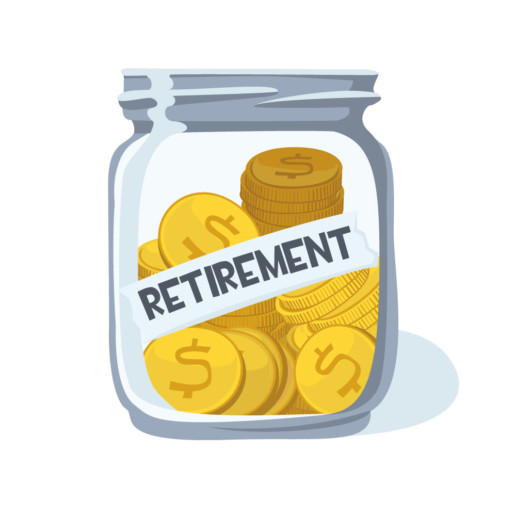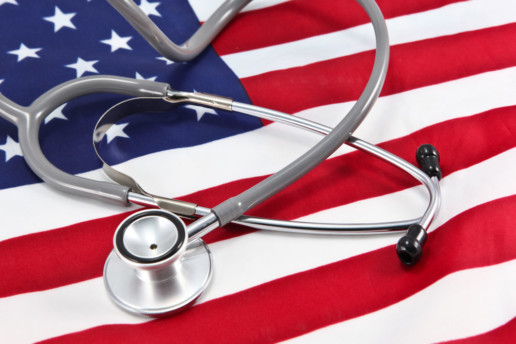BREAKING: Health Care Bill Moves to Debate on Senate Floor with 51-50 vote
In case you haven't heard, the motion to debate a version of the Health Care Bill after multiple renditions that has been dragging it's way through congress and stalled in the Senate has just been successfully passed with a narrow vote of 51-50 in favor with Vice President Pence casting the tie-breaking vote. The bill has a long road ahead and likely a vast number of revisions.
You can keep an eye on relevant news from our Navigator page right here on our own website. We know it is overwhelming to try to keep up with all of the news from all of the disparate sources. Our Navigator resource simply works to curate content from a variety of trusted, non-partisan sites across the internet and bring them to a central location to provide you a trusted place to stay-up-to-date on Health Care news at a glance.
Source: Wall Street Journal, Daniel Nasaw,Michelle Hackman
Access Live Updates on the Motion Here: https://www.wsj.com/livecoverage/senate-obamacare-repeal-and-replace-vote
Moments ago:
Vice President Mike Pence just broke the 50-50 tie. The motion to proceed passes and the Senate will now begin debate on a bill to repeal and replace the Affordable Care Act.
With the motion passed, Senators will now proceed to 20 hours of debate on several proposals repealing parts of the 2010 Affordable Care Act, including their replacement package and a separate bill repealing the law with a two-year delay.
They are expected to debate numerous amendments – not counted toward the 20 hours – including proposals put forward by Democrats....
10 Ways Millennials are Saving for the Future
Have your millennial employees started saving for their retirement? Check out this article by Marlene Y. Satter from Benefits Pro and see what millennial across the country are doing to prepare themselves for retirement.
They’re called spendthrifts by other generations, are laden with student debt and burdened with lower-paying jobs.
But that doesn’t mean that millennials aren’t thinking about the future and saving for it.
And they could certainly use a little help—from human resources and from plan sponsors—to be more successful at it, since both the debt and the jobs don’t leave them much to work with when all expenses are accounted for.
Both HR and sponsors might want to consider how retirement savings plans and their features—auto-enrollment, auto-escalation, employer matching funds—could be tweaked to give millennials a boost in meeting major life goals and in saving for retirement, as well as for the health expenses it undoubtedly will bring along with it.
In the meantime, they can consider how millennials are already trying to stretch every dollar till it snaps—some in very unconventional ways.
In a survey, digital banking app Varo Money, Inc. has uncovered a range of methods millennials are using to make those paychecks go farther.
And while retirement is certainly on their radar, that’s not the only goal they’re pursuing; of course they have a whole life to live first. Some of their prime goals are travel, buying property and dreaming about a new car, while
Here are some of the strategies to which millennials resort in the quest to fund their futures. Can plan sponsors be less imaginative than some of these? Surely not….
10. Half of millennials surveyed save automatically.
While respondents say they aren’t fond of spreadsheets—they don’t track their money constantly, or input figures into programs like Excel or Mint to create detailed, category-based budgets—they do watch their bank balances regularly and are pretty aware of what they spend monthly.
They view it as “hands-off” money management.
What they do, however, is save automatically out of each paycheck, with 50 percent socking away a percentage every payday. So they’re prime candidates for savings plans with auto features—enrollment, escalation, etc.
A report from the Society of Human Resource Management points to multiple studies indicating that auto escalation in particular—but to a high level such as 10 percent—results in higher savings for employees, since few actually opt out of a rate higher than they might have chosen for themselves.
9. Millennials are looking to climb the corporate ladder—to a higher paycheck.
An impressive 39 percent of millennials are on the prowl for a better-paying job opportunity, which is yet another reason that HR personnel and plan sponsors hoping to retain good staff might want to keep an eye on millennials’ rate of pay, as well as their rate of savings.
Reviewing other benefits wouldn’t hurt, either, since the more attractive an existing job is, the more likely an employee is to stay.
Considering the cost of finding, hiring and training replacements, a raise and better benefits might be cheaper in the long run.
8. Millennials know food is cheaper at home, especially with a partner to share it.
Millennials, despite their spendthrift reputation, are willing to skip little luxuries like the much-vaunted avocado toast or make coffee and meals at home.
In fact, 36 percent stick with the coffeepot on the counter instead of the barista at the corner, while 11 percent of men and 3 percent of women are willing to abandon the avocado toast—after all, everyone has his, or her, breaking point when economizing.
And 26 percent of respondents point out that cooking for two is cheaper than dining solo at home—much less in a restaurant.
7. Millennials recognize how much cheaper it is to live as a couple.
While 75 percent of millennials are conscious of the financial benefits in being half of a couple. 44 percent point to the cheaper rent when there are two to share the load.
And that helps them both save more.
Even those who aren’t part of a couple are looking for roommates, according to Mashable, which reports on a SmartAsset study finding that in high-rent cities like San Francisco, New York and Boston a person can save at least $700 a month by having a roommate.
Cue in the cooking-at-home technique for group meals, and the savings grow even more.
6. Millennials go on fewer dates to save money.
Being in a relationship, say 16 percent of millennials, is cheaper than still looking, since they save money by not going out on so many dates.
5. They save on taxes if they’re married.
Ever-practical, these millennials. They recognize that being half of a married couple can save on their tax bill—and they don’t forget that either when looking for cash to stash for the future.
4. They bargain-hunt for credit card perks.
Make no mistake, among millennials travel is a big deal: 58 percent said travel destinations are their favorite topic of conversation.
And asked what they would purchase with $2,000 if they could only spend it on one thing, 25 percent said plane tickets.
As a result, they tend to be particularly savvy when it comes to being able to travel, with 16 percent seeking out credit cards that provide big mileage bonuses.
3. They leverage perks to pursue other little luxuries without having to lay out cash for them.
In fact, they’re fond of doing it for travel, with 7 percent using airline miles to upgrade to business class.
In addition, 7 percent use status from premium credit cards for hotel upgrades, and 6 percent use premium cards for lounge access.
2. They’re planning on grad school.
While that may not seem like saving—even though it’s definitely ahead of the 11 percent of male millennials who are saving for a new luxury car and the 12 percent of female millennials saving for a new wardrobe—they’re looking toward an advanced degree for a leg up the job ladder.
Oh, and 27 percent are saving for a place of their own.
1. They stay away from credit cards.
Mashable reports that, despite their spendthrift reputations, millennials are actually opting for other types of technology—digital wallets, for instance—but not so much credit cards.
It cites a BankRate finding that in fact, 67 percent of millennials don't have credit cards—the lowest amount of people without credit cards in any demographic, among adults.
And they’d rather be paid in cash, thank you very much. So say 58 percent, and they’re smart; it wards off unnecessary purchases and helps keep them out of credit card debt.
See the original article Here.
Source:
Satter M. (2017 June 29). 10 ways millennials are saving for the future [Web blog post]. Retrieved from address https://www.benefitspro.com/2017/06/29/10-ways-millennials-are-saving-for-the-future?ref=mostpopular&page_all=1
Revised GOP Healthcare Bill Still Good for Employers
Has the uncertainty surrounding the BCRA left you worried about your company's healthcare plan? Here is an interesting article by Victoria Finkle from Employee Benefit News illustrating all the positives the BCRA will bring to employers and their company's healthcare program.
The latest version of the Senate Republican healthcare bill contains some significant changes, but provisions impacting employer-sponsored plans remained largely untouched.
The plan, unveiled on Thursday, retains a number of important changes for employers that were included in an earlier draft of the legislation made public last month. GOP lawmakers have been working for months on an effort to undo large swaths of the Affordable Care Act.
“Generally, the changes that were applied didn’t significantly change the dynamics of the Senate bill as it relates to large employers,” says Michael Thompson, president and chief executive of the National Alliance of Healthcare Purchaser Coalitions, a nonprofit network of business health coalitions.
Employer groups have been supportive of several major provisions highlighted in the earlier version of the Better Care Reconciliation Act that remain in the new proposal. Those include measures to remove the penalties associated with the employer mandate and a delay to the Cadillac tax for high-cost plans.
The latest Senate bill also retains important changes to health savings accounts that, for example, allow employees to allocate more funds into the accounts and that permit the money to be used on over-the-counter medications. It also reduces the penalty associated with redrawing funds from the account for non-qualified medical spending.
Providing more flexibility around the use of HSAs — tax-advantaged accounts that accompany high-deductible health plans — benefits employers and employees alike, says Chatrane Birbal, senior adviser for government relations at the Society for Human Resource Management.
“As healthcare costs arise, more employers are embracing high-deductible plans and this is a good way for employees to plan ahead for their medical expenses,” she says.
There is one small fix related to health savings accounts that made it into the revised draft, explains James Gelfand, senior vice president of health policy for the ERISA Industry Committee.
The updated language now permits out-of-pocket medical expenses for adult children up to 26-years-old who remain on a parent’s health plan to be paid for out of the primary account holder’s HSA. There were previously limitations on use of those funds for those over 18 who remained on a parent’s plan, based on Internal Revenue Service guidelines.
“One of the little tweaks they’ve put in to improve the bill is changing the IRS code to say, actually, yes, an adult dependent still counts and can use an HSA to help save on their healthcare costs,” he says.
Experts note, however, that a key change in the new bill related to HSAs — the ability to use the pre-tax money to pay insurance premiums — does not appear to apply to employer-based plans.
There are several other provisions in the revised legislation that are likely to be debated by the Senate in coming weeks, but that do not directly impact employers.
One controversial measure, developed by Republican Sens. Ted Cruz of Texas and Mike Lee of Utah, would allow insurers to offer lower priced, non-ACA-qualified plans in the individual market in addition to plans that meet Obamacare requirements. The latest bill also would provide more funding for the opioid epidemic.
Sen. Lindsey Graham, R-S.C. and Sen. Bill Cassidy, R-La., meanwhile, announced this week that they are developing an alternative proposal to the one unveiled by Republican leaders. Initial details for the alternative proposal were released on Thursday. The legislation is centered on a strategy to send more federal funding directly to the states through block grants.
“Instead of having a one-size-fits-all solution from Washington, we should return dollars back to the states to address each individual state’s healthcare needs,” Graham said in a statement on Thursday.
Those representing employer-based plans said they have reservations about the Graham and Cassidy proposal.
Gelfand notes that the alternative plan is expected to keep in place many of the taxes stemming from the ACA, such as the Cadillac tax and a tax on branded prescription drugs, and is unlikely to contain some of the BCRA revisions around the use of HSAs.
“It basically provides none of the relief that the BCRA would provide,” he says.
See the original article Here.
Source:
Finkle V. (2017 July 16). Revised GOP healthcare bill still good for employers [Web blog post]. Retrieved from address https://www.benefitnews.com/news/revised-gop-healthcare-bill-still-good-for-employers?tag=00000151-16d0-def7-a1db-97f024b50000
Senate’s Revised Obamacare Repeal Bill: What’s Different and is it Enough?
Do you know how the Senate's health care bill differs from Congress' bill? Check out this great article by Jared Bilski from HR Morning and find out the 6 key differences that separate the BCRA from the AHCA.
After failing to garner enough support for a vote before the July 4th recess for the Better Care Reconciliation Act of 2017 — aka the ACA repeal bill — the Senate went back to the lab and made some changes. Now the revised bill is out, and HR pros are anxiously waiting to see what happens next.
Although the Senate did leave many of provisions in the original bill intact, it did make some notable changes geared toward appeasing right-leaning Senators who didn’t feel the bill went far enough to repeal and replace the current health reform law.
6 key differences
Those changes:
1. Pared-down benefit requirements
Where the ACA requires insurers to meet minimum requirements that include coverage for 10 essential health benefits, the revised bill would allow insurers to offer cheaper, slimmed-down coverage if the insurers offer at least one plan which meets the ACA standards.
)Note: Healthcare experts warn this change would severely threaten access to coverage for sick patients.)
2. Opioid-crisis funding
The revised bill would provide $45 billion to states to help combat the national opioid crisis. While this is well short of what experts say is needed to address the issue, it’s still more than the $2 billion the original Senate bill had earmarked for opioid-crisis funding.
3. Controversial tax cuts removed
Although the new Senate bill would keep some of the ACA taxes, it would kill two tax cuts that benefited the wealthy and do away with a tax break for high-earning health insurance execs. Both the cuts and the tax breaks were highly criticized aspects of the original Senate bill.
4. Catastrophic health plans
Under the Senate bill revision, people eligible for subsidies to receive tax credits would be able to purchase catastrophic health plans. Plus, anyone would be allowed to buy catastrophic coverage.
The ACA does allow young adult and some additional individuals to buy high-deductible, catastrophic plans featuring low premiums. But federal subsidies aren’t available for these plans — an attractive incentive for healthy individuals with fewer healthcare needs.
5. HSA-premium payments
The bill would allow individuals to use HSA funds to pay for healthcare insurance premiums.
6. Market stabilization
In an effort to help states reduce premiums in order to stabilize their insurance marketplaces, the revised Senate bill provides $182 billion in funding, an $112 billion increase from the $70 billion set aside in the first draft of the bill.
See the original article Here.
Source:
Bilski J. (2017 July 14). Senate's revised obamacare repeal bill: what's different and is it enough [Web blog post]. Retrieved from address https://www.hrmorning.com/senates-revised-obamacare-repeal-bill-whats-different-and-is-it-enough/
4 Ways Employers can Prepare for Healthcare Changes
With all the proposed changes coming to healthcare. Take a look at this article by Mark Johnson from Employee Benefit News and see what you can do to prepare yourself and your employees for that call the changes coming to healthcare.
The new healthcare bill, revealed by U.S. Senate Republicans Thursday, could bring significant changes to organizations and their employees. Granted, there’s a long way to go before any Obamacare replacement legislation is signed. But health insurance is a complex component of running any business, and it’s important that employers start preparing for what might come.
Here are four actions items employers should be addressing now.
1. Create a roadmap. A compliance calendar is a helpful tool in identifying major deadlines. Employers are legally obligated to share health insurance and benefits updates with their employees by certain dates. Employees must be given reasonable notice — typically 30 days prior — of a major change in policy. There will likely be a set date for compliance and specific instructions around notice requirements that accompany the new legislation.
One step to compliance is adhering to benefit notice requirements. Benefit notices (i.e., HIPAA, COBRA, Summary Plan Descriptions, Special Health Care Notices, Health Care Reform, Form 5500 and others) vary by the size of the organization. Other steps can be more involved, such as required changes to plan design (e.g., copays, deductibles and coinsurance), types of services covered and annual and lifetime maximums, among others. Create a compliance calendar that reflects old and new healthcare benefit requirements so you can stay on track.
2. Rally the troops. Managing healthcare compliance spans several departments. Assemble key external and internal stakeholders by department, including HR, finance, payroll and IT.
Update the team on potential changes as healthcare legislation makes its way through Congress so they can prepare and be ready to execute should a new bill be signed. HR is responsible for communicating changes to employees and providing them with information on their plan and benefits. Finance needs to evaluate how changes in the plan will affect the company’s bottom line. Payroll must be aware of how much of an employee’s check to allocate to health insurance each month. In addition, payroll and Human Resources Information Systems (HRIS) are used to track and monitor changes in employee population, which helps employers determine benefit notice and compliance requirements. All departments need to be informed of the modified health insurance plan as soon as possible and on the same page.
3. Get connected. It’s essential to verify information as it’s released, via newsletters, seminars, healthcare carriers, payroll vendors and consultants. These resources can help employers navigate the evolving healthcare landscape. Knowledge of changes will empower an organization to handle them effectively.
4. Evaluate partnerships. There’s no better time for employers to examine their current partners, from an insurance consultant or broker to the accounting firm and legal counsel. An employer’s insurance consultant should be a trusted adviser in working on budgeting and benchmarking the company plan, administering benefits, evaluating plan performance and reporting outcomes. Finding an insurance solution that meets a company’s business goals, as well as its employee’s needs, can be accomplished with a knowledgeable, experienced insurance partner.
Staying ahead of healthcare changes is essential for organizations to have a smooth transition to an updated healthcare plan. Strategic planning, communication among departments and establishing the right partnerships are key. Employers must be proactive in addressing healthcare changes so they are ready when the time comes.
See the original article Here.
Source:
Johnson M. (2017 June 23). 4 ways employers can prepare for healthcare changes [Web blog post]. Retrieved from address https://www.benefitnews.com/opinion/5-ways-employers-can-prepare-for-healthcare-changes
Time for an Arnold Family Favorite
This month, we are bringing you some food favorites of our own Rich Arnold!
Rich is thrilled to be a part of the Saxon team and to provide the education to simplify the options and help his clients make a smart decision based on their individual needs. By representing all the carriers, he can provide the right solution at no cost to his clients.

Over the years, Rich has been a teacher, an owner of several printing businesses, and recently retired after 10 years running the Sharonville Chamber of Commerce.In his spare time, Rich is actively working with non-profits, helping with community projects, and spending time with his 5 grandchildren.
For a night out, Rich recommends checking out the lobster cardinal at Barresi’s Italian Restaurant!
STAY IN
This Armenian Pilaf (Rice Pilaf) is an Arnold family favorite.
It is easy to make and goes with most of anything but our family really likes it when I make it with BBQ chicken. The grandkid’s eyes light up when they find out we are making rice pilaf. Plus, Grandpa, that’s me, likes it the second, third and fourth time when I heat it up from the refrigerator!
- 1/3 of 1 stick of butter
- ½ cup thin raw egg noodles crushed up
- 1 cup non-instant rice
- 2 cups chicken broth
- 1 tsp salt
Melt butter in sauce pan, and add noodles.
Brown noodles in butter stirring so it doesn’t burn, just brown.
Add rice to noodles and mix. Add broth and salt and cover. Cook over
Low heat. Uncover after 15-20 minutes. Good served with chicken or pork
DINE OUT
My favorite restaurant is Barresi’s Italian Restaurant located in their original home in the heart of Deer Park/Madiera.
It is a toss-up as to which I enjoy more – the lasagna or the lobster cardinal! All made from scratch and mouthwatering.
FUN FACT
Other than the satisfaction of helping folks get through the maze of Medicare options I am now the grandfather of 5 fabulous grandchildren ranging from 4 to 9 years old. Playing Old Maid, going to the park, attending supporting events, deciding who gets to ride in Grandpa’s car this time, being the Bear as I chase them around the house, and oh the fun we have every day!
How to Build Financial Wellness into a More Holistic Wellness Program
Are you looking for new ways to help your employees increase their financial wellness? Check out this great article by Michelle Clark from SHRM highlighting what HR can do to help employees engage with the company's benefits program to improve their financial situation.
The majority of HR professionals give their employees a financial health rating of “fair” and nearly 20 percent report that their employees are “not at all” financially literate according to a national SHRM survey.
That’s an issue. Because when employees are stressed about money they don’t turn their worry off at work – and the price is paid in lost productivity.
You can help fix the problem. Everyone wins when traditional employee wellness programs are recast in a more holistic, well-rounded way – with financial wellness an important cornerstone.
There is no cookie cutter solution. But if you build a customized program that’s responsive to specific requirements and comfort levels of different employee groups, it can be rewarding and valuable.
First, review your employee demographics to get an idea of what their financial situations may look like. For example, it’s understood that the majority of today’s workforce is comprised of three age groups: Baby Boomers, Generation X and Millennials. Each has different financial stressors and preferences on how they prefer to receive assistance:
- Boomers on the verge of retirement are wondering if they can afford it or even want to retire. If they need to work, they are worried they’ll have a hard time finding a job.
- Generation X can barely think about retirement planning when they’re trying to cover the mortgage, raise kids, save money for college and shoulder responsibilities for aging parents.
- Millennials are burdened by student loan debt while trying to stretch their paychecks so they can live on their own instead of with their parents.
There also are vastly different ways each accesses support. Boomers may be okay with online resources and one-on-one coaching. But Millennials and Gen Xers may want more high-tech resources such as websites offering basic money courses and worksheets to help with budgets, housing or investment planning.
Once a solution has been established, the next step is getting people to partake. You don’t want to target employees, since privacy is a major consideration. Offering options allows employees to engage privately on their own terms. That’s why the online solutions are ideal for individual financial issues, offered in tandem with more on-site sessions on general concerns. And there’s always the potential of offering one-on-one financial counseling or financial wellness coaches to round out your program.
See the original article Here.
Source:
Clark M. (2017 June 16). How to build financial wellness into a more holistic wellness program [Web blog post]. Retrieved from address https://blog.shrm.org/blog/shrm-blog-june-2017-how-to-build-financial-wellness-into-a-more-holistic-we
Employees Aren't so Sure About Their Benefits Options
Are your employees having a hard time understanding all the benefits that are offered to them? Take a look at this article by Katie Kuehner-Hebert from Benefits Pro and find out the major questions that most employees seem to have about their employee benefits.
Employers have a conundrum: One-fifth of workers regret the health care benefit choices they make, but the same percentage of workers also concede they ignore any written educational materials about benefits their employers provided.
To make matters worse, according to Jellyvision’s 2017 ALEX Benefits Communication Survey, two-thirds don’t like in-person consultations -- not even if it’s within a group or one-on-one with a benefits expert.
So what’s an employer to do?
“The challenge is most people don’t want ‘education’ on these topics,” says Jellyvision chief executive Amanda Lannert. “No one wakes up with a burning desire to learn about HDHPs. In our experience, people respond best to plain-English communication that feels like they’re talking about benefits with a friend -- if benefits were a thing friends ever talked about.”
The good news is 82 percent of the 2,043 U.S. adults surveyed by Harris Poll say they’re satisfied with their employer’s benefits communication, and 86 percent feel their company has provided them with enough information to make informed decisions. A majority (69 percent) say they personally have spent either “a great deal” or “a lot” of time learning about their company’s benefits offerings.
However, while 89 percent say they generally understand their benefit options, more than a few aren’t too sure about all of the details.
For example, only 59 percent are correct in identifying the full cost of their health care plan, including their contribution and their employer’s contribution, and half (50 percent) say they are not knowledgeable about high-deductible health plans. More than half (54 percent) are unsure whether they can make changes to their insurance during qualified life events, and 43 percent are unclear on where to direct their health insurance questions.
“We think the number one biggest take-away of this entire survey is… employees want your help when choosing their health plans,” the authors write.
Indeed, more than half (55 percent) of all employees whose company offers health insurance say they would like help from their employer when choosing a health plan. Roughly half (49 percent) say the decision-making process is very stressful, and 36 percent feel the open enrollment process at their company is extremely confusing.
Jellyvision’s survey asked respondents to react to a possible repeal of the Affordable Care Act, particularly as it relates to employer-provided health insurance plans, and found a majority (61 percent) don’t think a repeal would affect them personally.
When asked about keeping certain provisions of the ACA, 80 percent say it’s “absolutely essential” or “very important” to keep coverage of preexisting conditions, 78 percent say that about free preventative care, and 67 percent say that about coverage of adult children up to age 26.
See the original article Here.
Source:
Kuehner-Hebert K. (2017 June 22). Employees aren't so sure about their benefits options [Web blog post]. Retrieved from address https://www.benefitspro.com/2017/06/22/employees-arent-so-sure-about-their-benefits-optio
Unrealistic Expectations Muddy Employee Retirement Planning
Many younger employees have unrealistic dreams when it comes to planning their retirement. Here is a great article by Paula Aven Gladych from Employee Benefit Adviser on what you can do to help your millennial employees plan for their future retirement.
Three generations of U.S. investors accept that they are largely responsible for funding their own retirements. But many of them harbor unrealistic hopes of receiving a sizable inheritance as part of their funding plan.
These were among the conclusions drawn by a recent survey of 750 individual investors with a minimum of $100,000 in investable assets—including 223 millennials, 251 Gen Xers and 236 baby boomers.
The 2017 study was conducted by the U.S. research arm of Natixis Global Asset Management, a French company that is one of the 20 largest asset managers in the world. It found that 78% of investors recognize that more of the retirement funding burden is falling on their shoulders, since their employers have begun offering defined contribution retirement plans in lieu of defined benefit pension plans. And many also believe that Social Security won’t be available to them by the time they retire. But a significant percentage (43%) hope to receive an inheritance that will help them compensate for any savings shortfall.
This is especially true of millennials, who are twice as likely as baby boomers to expect that a financial windfall from their parents or grandparents will play an important role in meeting their retirement needs. Per the survey, 62% of millennials, compared to only 31% of boomers, anticipate receiving an inheritance that will help fund their retirement.
That’s a major disconnect, says Dave Goodsell, executive director of the Natixis Durable Portfolio Construction Research Center, which carried out the research. He points to findings that 40% of baby boomers don’t plan to leave an inheritance and 57% don’t think they will have anything left to pass down to their children or grandchildren. Only 56% even have a will in place.
Further exacerbating the situation, many of the investors surveyed underestimate the amount of savings they will need for retirement. They assume that they will only need replace 63% of their pre-retirement income, according to Goodsell, which is at odds with the retirement industry’s more conservative target of 75% to 85%.
Looking to the kids
Apart from an inheritance, many of the investors surveyed also believe they can count on their children for some sort of support when they retire, either through shared living arrangements or some type of stipend or allowance. “Retirement has become a multigenerational question,” Goodsell observes.
On the other hand, only 37% of the respondents say they expect Social Security to be an important source of income for their retirement. “There’s a great deal of skepticism,” notes Goodsell, “which should serve as a motivation to plan ahead for retirement and set realistic savings and spending goals.” Unfortunately, he adds, many investors’ decision making is clouded by unrealistic expectations.
Workplace 401(k) plans encourage savings discipline, since they make it easy for employees to save automatically. But in and of themselves they are insufficient, says the Natixis researcher, and employers need to help their employees make better financial determinations by providing them with retirement planning tools, including access to a financial adviser.
“Access is critically important,” he says. “Because responsibility is being shifted off to individuals, we need to make sure they have access to the right resources and understand how to use them.”
Key topics that need to be addressed, according to the survey, include financial planning basics, such as budgeting; how to manage and plan for required minimum distributions; tax, estate and long-term care planning, as well as managing debt and credit cards and understanding investment risk.
See the original article Here.
Source:
Gladych P. (2017 June 25). Unrealistic expectations muddy employee retirement planning [Web blog post]. Retrieved from address https://www.employeebenefitadviser.com/news/unrealistic-expectations-muddy-employee-retirement-planning?brief=00000152-1443-d1cc-a5fa-7cfba3c60000
Rising Healthcare Costs Hurting Retirement Contributions
The rising costs of healthcare are starting to have a negative impact on employees. Find out how employees are having trouble saving for their retirement thanks to the rise of healthcare costs in the interesting article by Paula Aven Gladych from Employee Benefit News.
Rising healthcare costs have had a dramatic impact on the ability of workers to save for retirement and other financial goals.
The latest Bank of America Merrill Lynch Workplace Benefits Report finds that of the workers who have experienced rising healthcare costs, more than half say they are contributing less to their financial goals as a result, including more than six in 10 who say they are saving less for retirement.
What’s more, financial stress also is playing a big role in employee physical health with nearly six in 10 employees saying it has had a negative impact on their physical well-being. This stress weighs most heavily on millennials at 68%, compared with baby boomers at 51%, according to the research.
Because of these dire statistics, more and more employees are looking to their employer to help them through financial challenges.
“We spend a lot of our waking time working and a lot of our finances are made up of the compensation and benefits our employer provides,” says Sylvie Feast, director of financial guidance services for Bank of America Merrill Lynch. “[Employer’s] healthcare and 401(k) plans are really valued by employees. I don’t think it’s surprising that they are looking to their employer that provides essential benefits to help provide access to ways to better manage their finances.”
And because employers offer healthcare and retirement benefits, it isn’t a stretch for workers to expect their employers to offer financial wellness as a benefit as well, Feast says.
“There’s no silver bullet, but a continuing evolution of trying new things to see what works and has an impact with the workforce,” Feast says. “Culture has something to do with it.”
Online tools, educational content, professional seminars in the workplace and personal consultations can be especially effective offerings, Feast says, adding that those options can help employees get more comfortable talking about their finances at work and at home with their family.
“People are pretty private about their finances,” Feast says. “I think there’s this access the employer needs to provide, but there also needs to be an arms-length distance so it is not the employer delivering it.”
Retirement savings is the area most workers want help with, according to Bank of America Merrill Lynch’s survey. More than half of baby boomers (54% ), 53% of Generation X and 43% of millennials say they need help saving for retirement, with 50% of all respondents ranking it as their No. 1 financial issue.
For millennials, good general savings habits and paying down debt were their next most important financial priorities. For Generation X, paying down debt, good general savings habits and budgeting all tied for second, and for baby boomers, planning for healthcare costs and paying down debt were their next biggest financial priorities.
Eighty-six percent of employees surveyed say they would participate in a financial education program provided by their employer, according to Bank of America Merrill Lynch.
Financial education is a slow, but worthy process, Feast says.
“People don’t just automatically start to show an immediate impact to their behavior,” she says. But, “if [employees] take steps, [they] will start to gain control and get more confidence.”
See the original article Here.
Source:
Gladych P. (2017 June 7). Rising healthcare costs hurting retirement contributions [Web blog post]. Retrieved from address https://www.benefitnews.com/news/rising-healthcare-costs-hurting-retirement-contributions










